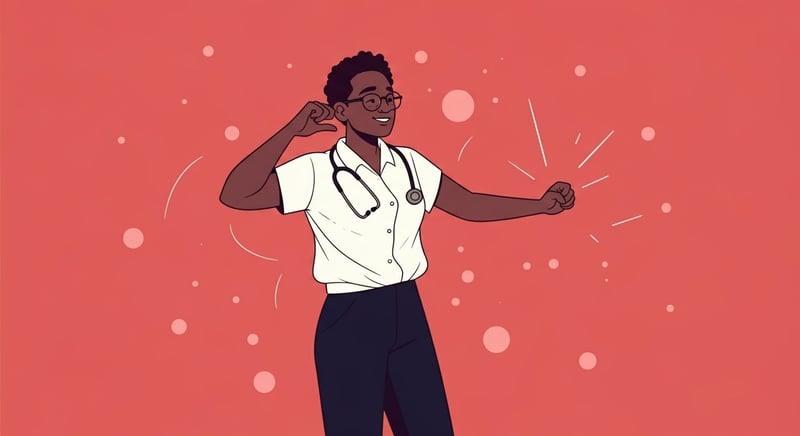In a world increasingly connected by digital technology, understanding the art of greeting can enrich personal and professional relationships. This guide explores how to move beyond the simple ‘hello’, incorporating the nuances of cultural salutations, the evolution of greetings in the digital age, and the balance between formal and informal exchanges. Whether networking at a wellness spa in Bodrum or introducing yourself in the metaverse, mastering the universal language of ‘hello’ can unlock doors worldwide.
Beyond ‘Hello’: Mastering Salutations for Every Situation
Cultural Nuances in Global Greetings
Greetings go beyond simple words; they are nuanced cultural expressions that shape initial perceptions. Understanding these subtleties can profoundly impact interactions, fostering respect and rapport. For instance, the gentle bow in Tokyo conveys respect and hierarchy, deeply embedded in Japanese culture. In contrast, a casual “Hi” or “Hey” accompanied by a wave is common in New York, reflecting a more informal and egalitarian society. These differences highlight how greetings embody cultural values and social norms, providing a lens through which we can understand diverse communities.
- In Japan, different bows signify varying levels of respect, influenced by the social status of individuals involved.
- New Zealand’s “hongi” involves pressing noses together, symbolizing the sharing of life’s breath.
- Some indigenous cultures use silence as a greeting, allowing individuals to connect spiritually before verbal exchange.
Even within a single country, regional variations in greetings exist, influenced by local customs and history. Mastering these nuances is not just about linguistic proficiency; it’s about cultural sensitivity and the ability to navigate interpersonal dynamics effectively. For those seeking wellness and cultural connection, understanding these greetings can enhance your appreciation of cross-cultural experiences. You can explore more about wellness and cultural connections at Vitalica: Your Path to Ultimate Spa Relaxation & Wellness, providing a comprehensive guide for your journey.
Adapting Greetings to Different Contexts
The appropriateness of a greeting largely depends on the context and the relationship between individuals. Formal settings, such as business meetings or interactions with elders, typically require more structured salutations. A firm handshake, accompanied by a respectful title (Mr., Ms., Dr.), is often the standard in professional environments. Informal settings, on the other hand, allow for more relaxed greetings, such as “What’s up?” or a simple nod. Knowing when to use which greeting demonstrates social intelligence and awareness, essential for building strong relationships. Additionally, adapting to cultural norms helps ensure positive first impressions and avoids unintentional offense. Consider a spa retreat where introductions might begin with a gentle inquiry about well-being, reflecting care and tranquility and perhaps, the offer of a soothing foot bath to enhance the welcoming.
- Evaluate the setting: Is it a formal business meeting or a casual get-together?
- Consider the individual: Are you meeting an elder, a superior, or a peer?
- Observe cultural norms: Are there specific customs to be followed?
In today’s digital age, greetings have evolved from physical interactions to virtual exchanges. Digital greeting strategies now include everything from personalized email subject lines to interactive AI-powered assistance greetings. Understanding these evolving norms is crucial for maintaining effective communication in both personal and professional realms. Whether engaging in infrared sauna treatments or seeking massage spa services, the initial greeting sets the stage for a positive and relaxing experience, reinforcing the importance of mastering salutations in every situation.

The Art of the Greeting: Cultural Nuances and First Impressions
Decoding the Bow: Respectful Greetings in Eastern Cultures
In Eastern cultures, the act of bowing carries significant weight as a gesture of respect, gratitude, or apology. The depth, duration, and angle of the bow communicate social standing and the relationship between individuals. For example, in traditional Japanese settings, a deeper bow signifies greater deference, often used when greeting elders or superiors. In contrast, a slight nod might suffice among close friends or colleagues. Understanding these non-verbal cues is crucial for effective cross-cultural communication and avoiding unintentional offense. The precision and etiquette surrounding the bow demonstrate a profound respect for social harmony and hierarchy. The correct execution shows cultural sensitivity, while a misstep could lead to misunderstandings. The importance of such traditions is reflected in various cultural expressions, from formal ceremonies to daily interactions. To enhance your understanding of these traditions, resources like global greetings guides are invaluable, helping you navigate social situations with grace and respect.
- In South Korea, bowing is often accompanied by a slight hand gesture, further emphasizing respect.
- In some Chinese cultures, bowing may be reserved for honoring ancestors or elders, rather than daily greetings.
- The “gassho” in Buddhist traditions involves pressing palms together, symbolizing reverence and humility.
Handshake Harmony: Navigating European Greetings
In Europe, the handshake is a common form of greeting, but its nuances vary significantly from country to country. A firm handshake with direct eye contact is often the standard in Germany and the UK, conveying confidence and sincerity. In contrast, a softer handshake is more common in France and Italy, reflecting a less assertive approach. The number of kisses on the cheek also differs; in Spain, it’s customary to exchange two kisses; in France, it can range from one to four, depending on the region. These subtle variations can impact first impressions, underscoring the importance of cultural awareness when greeting someone from a different European background. For instance, understanding that in some regions, maintaining a slight distance is customary helps respect their personal space. Appreciating these differences can significantly enhance digital greeting strategies, enabling more personalized and culturally sensitive AI digital interactions. Moreover, recognizing the specific customs in locations near woodlands spa or during massage spa appointments showcases attention to detail. This awareness enriches your interactions, whether you’re discussing spa day deals or coordinating a foot bath appointment.
- Observe the handshake style of others to match their level of firmness.
- Be mindful of personal space and avoid standing too close.
- Ask about local customs if you are unsure to show respect and avoid unintentional offense.

Formal vs. Informal: Navigating the World of ‘Good Day’ and Beyond
Mastering the Art of Formal Salutations
Formal greetings are essential in settings that demand respect and professionalism. A well-delivered “Good day” or “Pleased to meet you” can set a positive tone in business meetings, academic environments, or when interacting with elders. These salutations convey politeness and esteem, fostering a sense of trust and formality. In professional environments, pairing a formal greeting with a firm handshake and direct eye contact can enhance your credibility and create a lasting impression. The choice of words, tone of voice, and body language all contribute to the effectiveness of a formal greeting. Whether attending a conference or meeting a new client, mastering these greetings is crucial for career success, and offering a pleasant “good day ” may improve communication. The capacity to employ greetings correctly ensures respectful and productive interactions.
- Use titles such as “Mr.,” “Ms.,” or “Dr.” followed by the person’s last name to show respect.
- Maintain good posture and make direct eye contact while delivering the greeting.
- Avoid slang or casual language, opting for clear and polite expressions.
Navigating Informal Greetings in Casual Settings
Informal greetings are perfect for relaxed environments, such as social gatherings, casual workplaces, or interactions with friends and family. A simple “Hi,” “Hey,” or “What’s up?” can create a friendly and approachable atmosphere. These greetings are less rigid and allow for more personal expression, fostering a sense of camaraderie and connection. In digital communication, informal greetings can be used in text messages or social media posts to convey warmth and informality. However, it’s important to gauge the context and relationship before using casual greetings in professional settings to avoid appearing unprofessional. Understanding the distinction between formal and informal greetings enhances your social intelligence, and you can engage in welcoming phrases. For instance, when visiting a spa to eng, like a woodlands spa retreat, a casual “Hello” to the staff reflects a relaxed atmosphere, creating a welcoming environment. The ability to adapt your greetings to suit the situation ensures comfortable and positive interactions.
- Use a relaxed tone of voice and smile to convey warmth and openness.
- Adapt your greeting to the specific social context and your relationship with the person.
- Incorporate casual body language, such as a nod or wave, to enhance the informal feel.

AI and the Future of ‘Hello’: Welcoming the Digital Age
AI’s Impact on Personalized Welcoming Phrases
AI is revolutionizing how we initiate conversations, offering personalized AI-powered assistance greetings tailored to individual preferences. Imagine an AI assistant that not only recognizes your voice but also anticipates your needs, offering a custom “Good day!” based on your schedule and mood. This level of personalization enhances user experience, making interactions feel more human and intuitive. As AI algorithms become more sophisticated, they can analyze data to determine the most effective welcoming phrases, adapting to different contexts and cultural nuances. Whether it’s a cheerful greeting to start your day or a formal salutation for a business meeting, AI is transforming the way we connect. These AI greetings are not just about convenience; they reflect a deeper understanding of human psychology and communication, enhancing overall digital interactions. In environments like an infrared sauna or massage spa, AI could learn your preferences and customize the ambient environment, enhancing the welcoming experience and incorporating tailored welcoming phrases. This level of personalization is transforming how businesses like woodlands spa engage with their clients.
- AI assistants can analyze user data to understand preferences and personalize greetings.
- Natural Language Processing (NLP) enables AI to generate contextually appropriate greetings.
- Machine learning algorithms continuously improve greetings based on user feedback.
Evolving Salutations in Virtual and Augmented Realities
Virtual and augmented realities are creating new frontiers for social interaction, and as result, also revolutionizing virtual hello standards. In these immersive environments, traditional greetings are evolving into interactive experiences, incorporating gestures, avatars, and spatial audio. For example, in a virtual reality meeting, participants might exchange virtual handshakes or high-fives, creating a sense of presence and connection. In augmented reality, greetings could involve overlaying digital elements onto the real world, such as personalized messages or animations. As these technologies mature, they will redefine how we initiate interactions, fostering more engaging and intuitive salutations. This evolution is particularly significant for global teams and remote workers, enabling more human-like interactions despite physical distance. Embracing such virtual hello innovations enhances digital greeting strategies. Consider multilingual hellos in a metaverse environment where avatars greet each other in their native languages in a virtual infrared sauna offering spa day deals! This personalized touch enhances the sense of presence and inclusivity. As technology advances, the metaverse should learn user preferences to customize “good day ” greetings, improving digital interactions.
- Virtual avatars can mimic human gestures to convey warmth and connection.
- Spatial audio enhances the sense of presence, making virtual greetings feel more realistic.
- Interactive elements, such as virtual handshakes, create engaging experiences.
Semantic Integration Across Platforms
Consistency in Greetings Across Platforms
Maintaining the essence of greetings across different communication platforms is essential for strengthening personal and professional relationships. Whether interacting via digital exchanges or face-to-face encounters, consistency in salutations ensures a seamless and cohesive experience. This is especially relevant with the rise of holographic meetings and virtual interactions, where adapting traditional greetings is crucial for maintaining a human touch. By integrating the same level of warmth and respect across all mediums, we reinforce our personal brand and enhance the quality of our interactions. Cultural salutations also play a significant role, requiring sensitivity and adaptation to diverse norms, whether in a virtual or physical setting. This includes being mindful of global greetings guides and ensuring proper etiquette in different scenarios, maintaining the essence of “hello” in every context.
- Use consistent language and tone across all platforms to maintain brand identity.
- Adapt traditional greetings to fit the context of digital or virtual environments.
- Incorporate visual cues, such as emojis or personalized backgrounds, to enhance digital greetings.
Enhancing Personal Connections through Integrated Salutations
Integrating salutations across various platforms enhances personal connections by creating a unified and recognizable communication style. When the same level of warmth and respect is conveyed whether through a formal email or a casual text, it reinforces trust and strengthens rapport. Applying consistency in greetings, especially when using virtual reality greeting etiquette, creates a seamless user experience, vital for interactions. Moreover, AI can play a role in seamlessly integrating welcoming phrases . The integration of salutations becomes more critical in cross-cultural communication, where understanding and respecting cultural nuances is essential. Consider the importance of a welcoming “hello” at every touchpoint, or a thoughtful spa retreat introduction, from initial contact to the actual visit. Whether coordinating a spa day deals or discussing treatment options, maintaining consistent and personal greetings enhances the overall experience. This holistic approach ensures that greetings are not merely formalities but meaningful expressions of connection.
- Develop a unified greeting strategy that aligns with company values and culture.
- Train employees to deliver consistent greetings across all communication channels.
- Use technology to streamline and personalize greetings, ensuring a human touch.
Vitalica Wellness Spa Deneyimi
Holistic Wellness Enhancement through Craniosacral Therapy and Physiotherapy
Improved Health Outcomes with Acupuncture and Yoga Kampları
Enhanced Vitality and Detoxification through Bitter Diyet and Wellness Programs
Frequently Asked Questions
How do cultural salutations influence first impressions in different countries?
What are some formal greetings examples suitable for professional settings?
How is AI impacting personalized welcoming phrases in digital communication?
In what ways can virtual reality greeting etiquette improve interactions in the metaverse?
How can I maintain consistency in greetings across different communication platforms?
Ready to revitalize your health with holistic therapies tailored to your needs?
